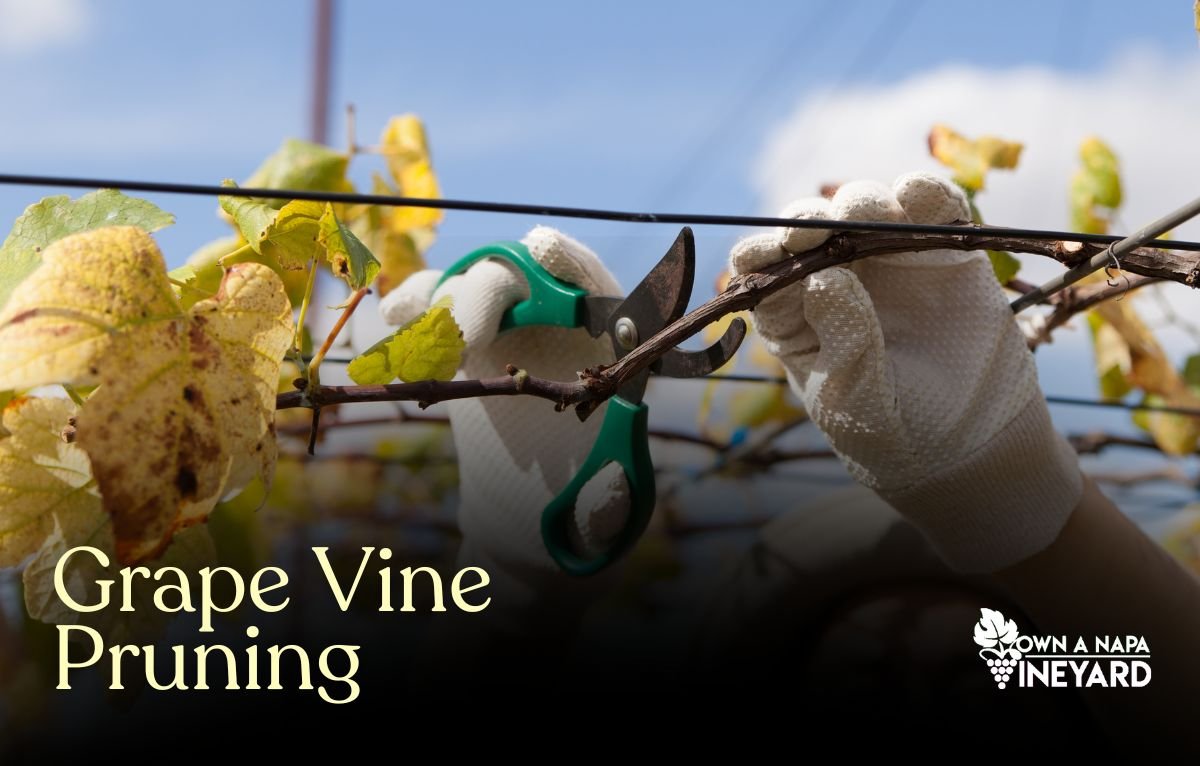Highlight
- Pruning is vital for grapevine health and fruit production.
- Correct timing ensures the vine focuses energy on fruit growth.
- Proper methods improve airflow, sunlight exposure, and yields.
Pruning is a critical part of grape vine care, directly influencing the health and productivity of your vines. Proper grape vine care pruning removes unnecessary growth, allowing the plant to concentrate its energy on developing strong canes and high-quality fruit.
Neglecting or over-pruning can lead to reduced yields, unbalanced growth, or even damage to the vine.
This guide will provide detailed tips and techniques to help you master the art of pruning grape vines.
Why Pruning is Crucial for Healthy Grape Vines
Pruning grape vines is essential for managing their size, encouraging airflow, and ensuring they produce quality fruit. Grapes grow on one-year-old wood, meaning only new canes from the previous year will bear fruit.
Proper grape vine care pruning ensures the plant focuses its energy on these productive canes, removing unproductive or overcrowded growth.
In addition to supporting fruit production, pruning shapes the vine, improves sunlight exposure, and reduces the risk of fungal diseases.
Without regular pruning, vines can become overgrown, leading to smaller, less flavorful grapes and higher disease susceptibility.
When to Prune for Optimal Results
Timing is critical when it comes to pruning grape vines, as it directly impacts their health and productivity. The best time to prune is during the dormant season when the vines are inactive, typically late winter to early spring. Pruning during dormancy allows the cuts to heal before the growing season starts, reducing stress on the plant.
In the northern hemisphere, pruning generally takes place between January and March, depending on the region and climate.
For the southern hemisphere, where seasons are reversed, pruning is done between July and September. Timing should always be adjusted to ensure pruning occurs before bud break to avoid sap bleeding and potential damage.
Pruning Timetable by Hemisphere
Hemisphere | Ideal Pruning Months | Notes |
Northern Hemisphere | January to March | Prune before bud break; avoid frost damage. |
Southern Hemisphere | July to September | Ensure pruning happens during dormancy. |
By aligning pruning activities with the right seasonal window, you give your grape vines the best opportunity to thrive during the growing season. Proper timing also minimizes risks such as frost exposure or late sap flow.
How to Prune Grape Vines Properly
Effective pruning requires understanding the vine’s structure and targeting the right canes. Start by removing dead, diseased, or damaged wood.
Identify one-year-old canes—these are lighter in color and will bear fruit—and trim them back to 6-12 buds each, depending on the variety and vine size.
- Remove Deadwood. Cut away all dead, damaged, or diseased wood to promote healthy growth. This step improves vine structure and reduces the risk of pests and diseases.
- Select Productive Canes. Retain 4-6 of the healthiest one-year-old canes, as they will bear fruit. Trim these canes to 6-12 buds to encourage balanced growth and fruit production.
Proper pruning ensures an open vine structure, better airflow, and enhanced sunlight exposure, which all contribute to healthier vines and higher-quality fruit.
Common Mistakes to Avoid During Pruning
Pruning mistakes can impact the health and productivity of grape vines. One common error is failing to prune at all, which can result in overgrown vines and smaller, lower-quality grapes. Over-pruning is another issue; cutting away too many buds leaves the plant with insufficient canes for fruit production.
Timing mistakes, such as pruning too early or late, can also stress the vine and reduce its yield. Always follow proper grape vine care pruning techniques and timing to avoid these pitfalls.
Post-Pruning Care to Support Recovery
After pruning, vines need proper care to recover and prepare for the growing season. Apply a dormant oil spray to eliminate overwintering pests, and consider a sulfur-based fungicide if fungal diseases are a concern. These sprays protect the vine and ensure a healthy start.
Fertilize in early spring to encourage new growth, and monitor the soil’s moisture level to provide consistent watering.
Address any signs of pests or disease promptly. These steps ensure the vines transition smoothly from dormancy to active growth.
How Pruning Enhances Fruit Quality
Pruning directly impacts the size, flavor, and overall quality of grapes. By removing excess growth, the vine can direct more energy to fewer, healthier clusters, resulting in larger, sweeter fruit. Leaf removal, a companion practice to pruning, improves sunlight exposure to the fruit, aiding in even ripening.
Neglected vines often produce small, unevenly ripened grapes due to overcrowding and poor air circulation.
Consistent grape vine care pruning ensures the vine’s energy is focused on fruit production, leading to a higher-quality harvest.
Conclusion
Pruning is essential for managing grape vines, improving their structure, and ensuring high-quality fruit.
By understanding the right techniques, avoiding common mistakes, and supporting the plant after pruning, you can maintain a healthy vineyard and enjoy productive harvests.
Proper grape vine care pruning not only enhances fruit size and sweetness but also extends the life of your vines, making them more resilient season after season.
For more tips on grape vine care pruning, visit Own A Napa Vineyard.
Whether you’re just starting or managing an established vineyard, we’re here to help you achieve your grape-growing goals.





